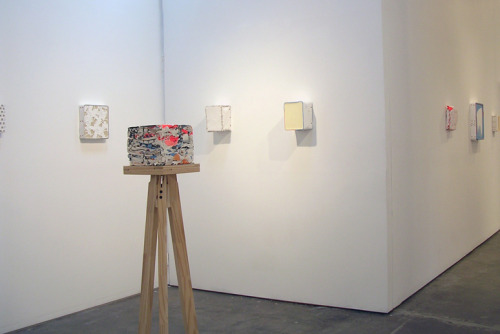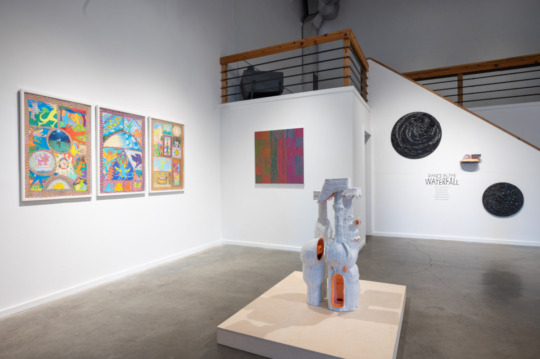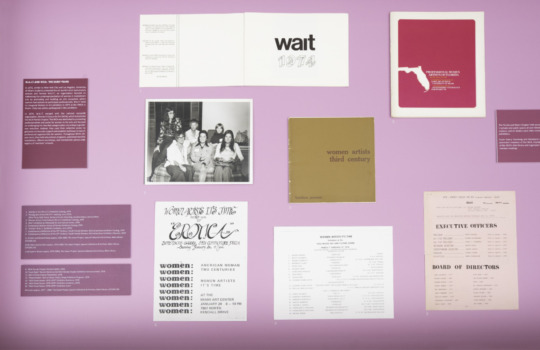As the exhibition’s title promises, there is a lot of paint on display in Jeff Conefry’s solo show, all of it affixed to rectangular supports made of panels and fabric. But despite the fact that these familiar elements of painting are present, as well as numerous visual references to its recent history, there are no “paintings.”
Conefry’s signature materials are strips and sheets of cast acrylic that are folded, shaped, and attached to the underlying panel with copper nails. In a nod to the traditional canvas, he occasionally employs bands of linen as well. The paint strips are usually white, at times alternating with blue, neon orange, or black. Because the casting process is slow, with a single colored layer of a multilayered strip taking between three and four days to dry, the process of making these objects has more in common with sculptural assembly than the immediate mark-making of painting.
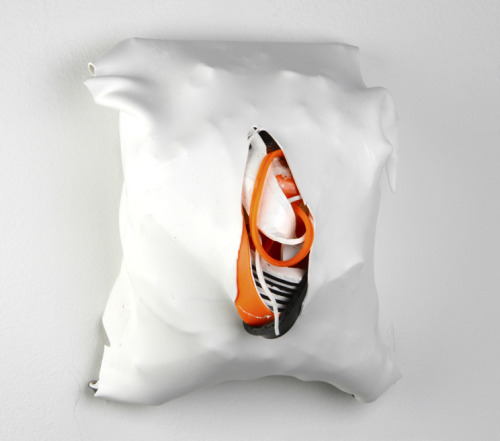
By recombining these components, Conefry generates a catalogue of charming new variations on the stale image of painting. The flat plane is one of the first elements to go: Wrapped (2014) sags off the wall like a stuffed pillow, disgorging its contents through a vertical slit down its center. Loops and coils of colored paint strips, like the chewed-up remnants of other paintings, spill forth from within its bulging white surface.
Other works keep the surface flat, but in bizarre ways. In Two Stripe 7 (2014), for example, the paint is laid down in stacked, gooey white folds held against the panel by two thick linen straps, as if restrained by a straitjacket. And the exaggerated depth of Paint Box (2014), which protrudes 5 inches from the wall, puts all sides of the work on an equal standing with its facing surface. These boxier pieces stare back at the viewer as blankly as any minimalist sculpture, but their textured skins—some rough and scored, some shiny as a lake of pudding—are begging to be touched. The sticky, fondantlike appearance of the acrylic sheets only plays up their resemblance to candies and other sweets.
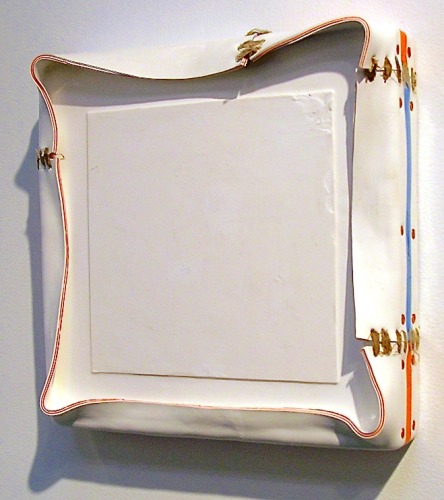

Even where a traditional flat plane exists, Conefry forces our attention outside of it. The empty center of White Square (2014) is bordered by a ribbon of paint made of layers of orange and white. The strips making up this “frame” are stitched together with linen, and the outside border features a blue and orange stripe. Color and form are squeezed and flattened into the margins, leaving only a monochrome void at the center.
Conefry runs through these changes with virtuoso skill, showing just how many riffs can be played using only the bare notes of painting. The resulting works are light and often funny. Paintings are stereotypically virile, upright and rigid, presenting tight, toned surfaces to the world. By contrast, Conefry’s style is closer to “squishy minimalism.” His works are lop-eared creations that droop and bulge like middle-aged bodies.
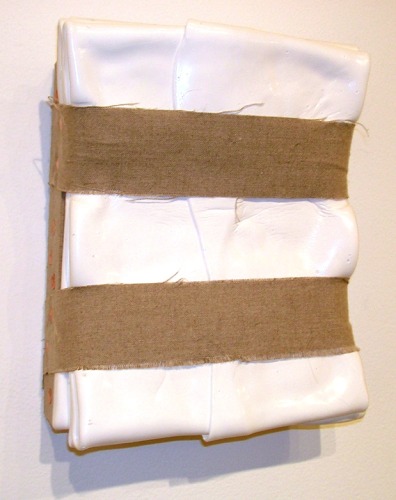
It’s tempting to think of these as sculptures, particularly since similar three-dimensional uses of paint have extensive precedents in work by Eleanor Aldrich, Kris Scheifele, Piers Secunda, Susanna Starr, and Leslie Wayne. However, pieces such as Woven 2 (2014), in which Conefry plaits white and orange paint strips into a wobbly grid, have equally strong affinities with textiles, most notably Ed Rossbach’s chunky, irregular baskets. Conefry even shares Rossbach’s comic flair. And he would hardly be alone in mirroring trends from the world of textiles; both Scheifele’s dynamic “contortions” and Wayne’s carefully draped “paint rags” veer into territory that fiber artists have been intensively exploring for decades. The signs of handmade construction such as linen stitching and visible nails in Conefry’s works further emphasize their continuity with the practices and traditions of craft. With their balance of lighthearted execution, ingenious materials, and rigorous scrutiny of the medium, they offer a treat for eyes that have had their fill of looking at paintings.
Jeff Confery, “Paint” is on view at Marcia Wood Gallery through December 13, 2014.
Dan Weiskopf is an associate professor of philosophy and an associate faculty member in the Neuroscience Institute at Georgia State University. He is the author, with Fred Adams, of An Introduction to the Philosophy of Psychology, forthcoming from Cambridge University Press.

